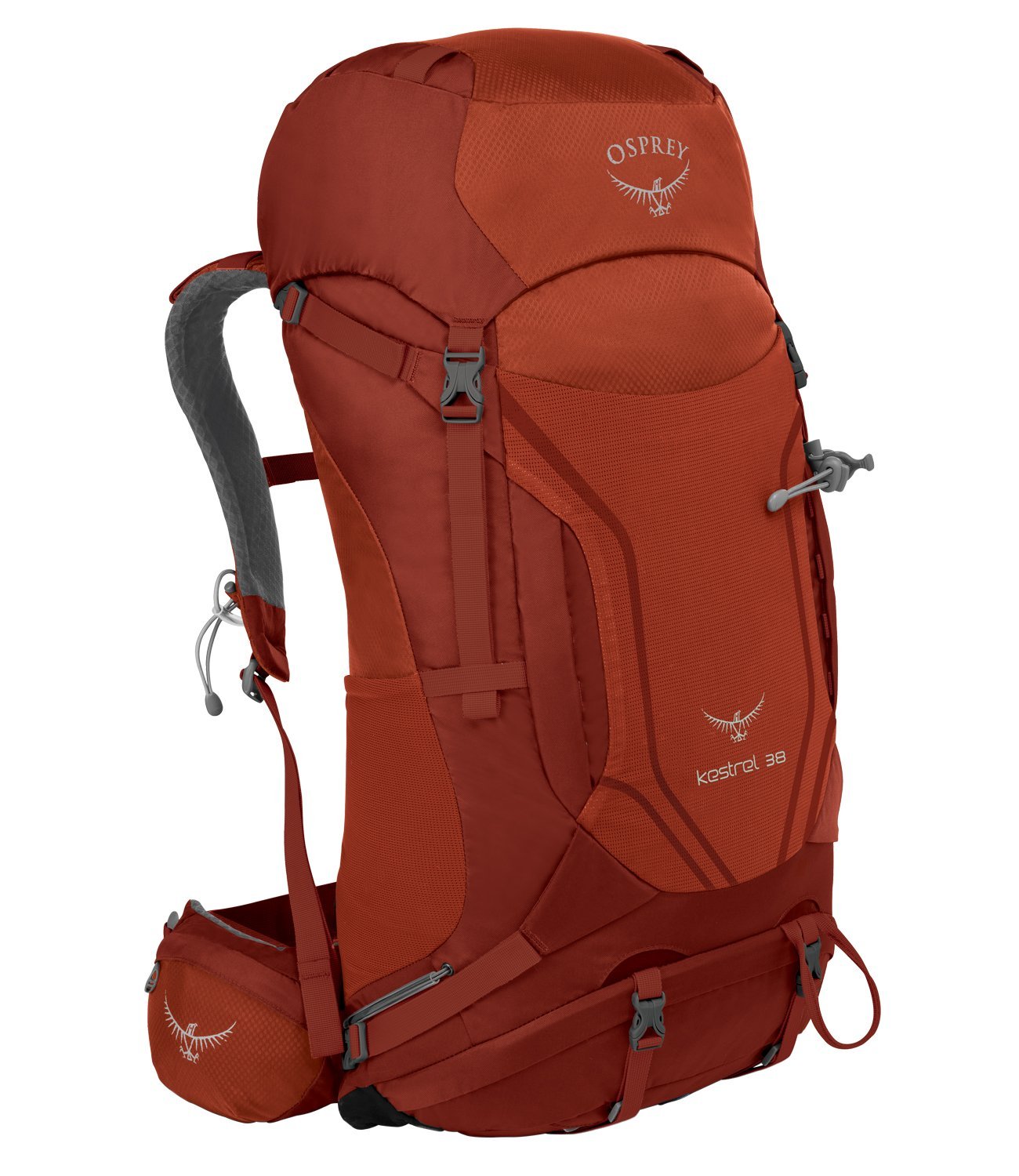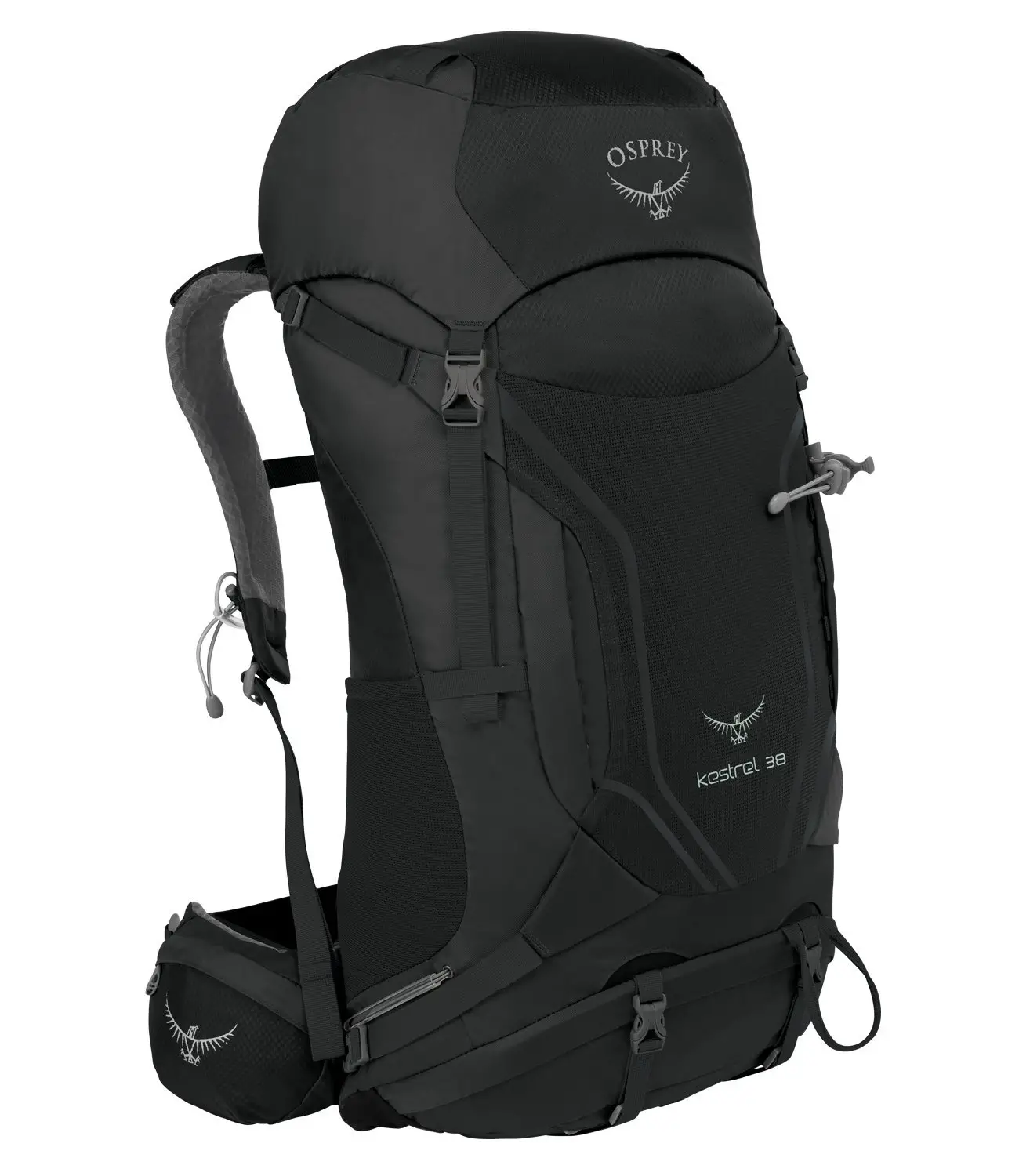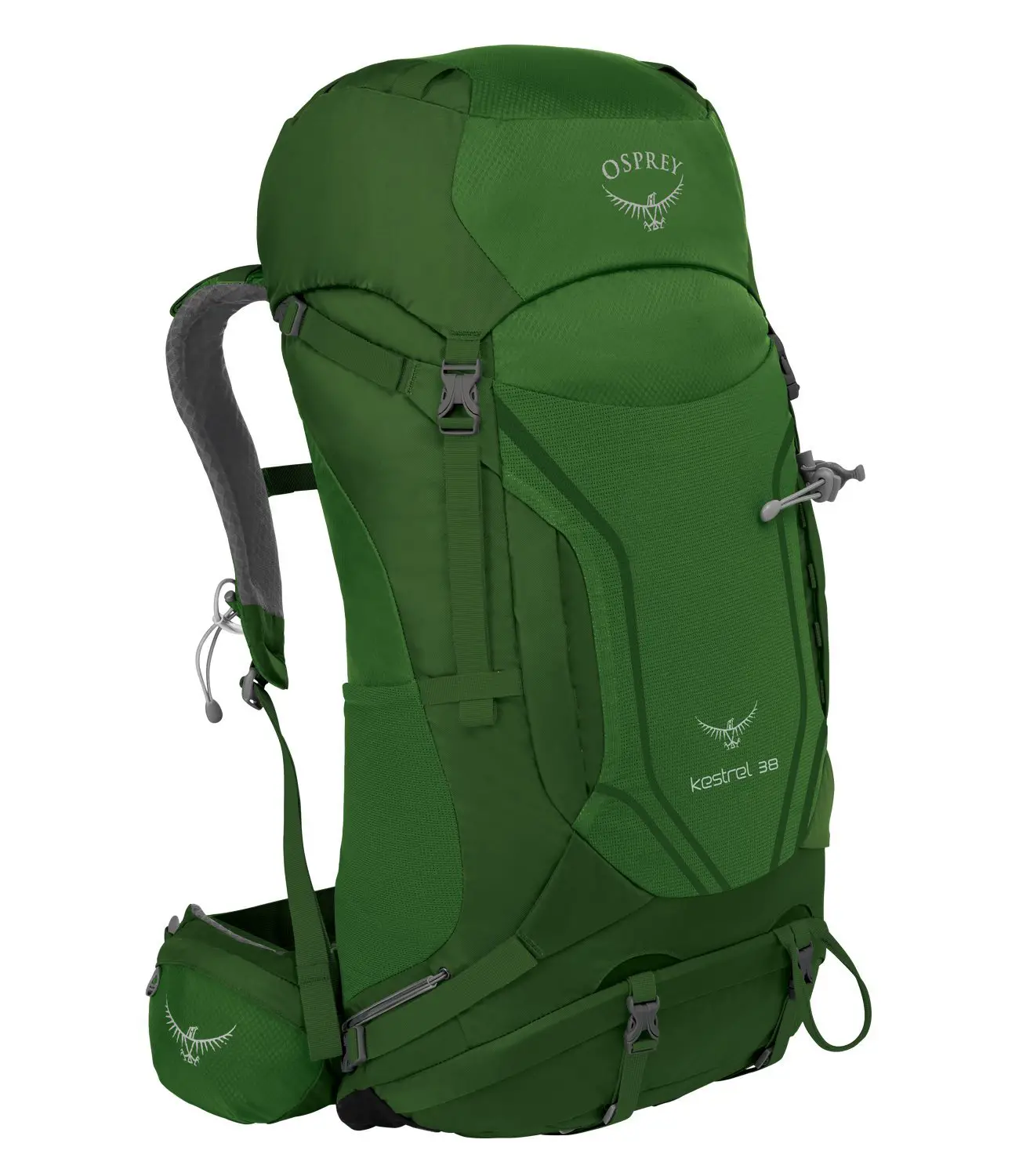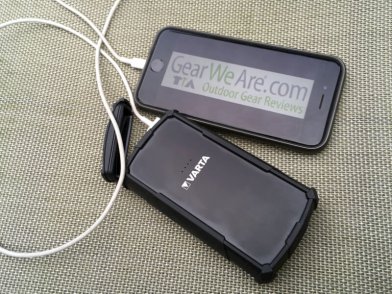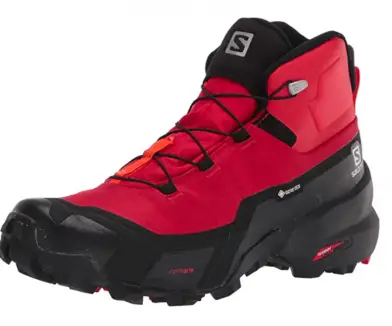Osprey Kestrel 38 Backpack
Editor's Pros & Cons
Pros
- Great build quality
- Great pocket variety
Cons
- Not waterproof
Review
I've been using an Osprey Atmos as my main Lowland Rescue pack for a couple of years now, and it's been perfect. But Osprey tried to tempt me away with a brand new hiking pack called the Kestrel for a few months, so here's a run-down of how that went.
The Kestrel design comes in 5 different sizes from 28-68L, but I plumped for the 38 so I could fit all my hill kit in with not too much bulk for when I'm forcing my way through hedges and forests.
Now, my experience of Osprey packs is that they're a bit like Swiss Army Knives. They have a huge range of features which are superb to play with when you first get the pack - I do love a good pack-packing session to sort through all my gear - but day-to-day you probably only use a few of those features to good effect. That's not to say that they're unnecessary, but rather that one man's saw is another man's hoof-destoner.
And so once I'd used Osprey's neat back-length adapter I forgot about it, along with the trekking pole loops and ice-axe loops. Not much call for either of those where I've been with this pack.
But pockets are my big thing. Pockets, attachment loops and adaptability. And as usual, Osprey have shoe-horned plenty of them into the daypack! The main section is a drawstring closure with a flip-over lid. It's accessible from the top, or via a bottom zipper - and has a divider so your world doesn't fall out of the base if you undo that zipper. I found this perfect for stashing medical kit in the lower part where I knew it would be immediately accessible without delving. The top of the main compartment I used to house clothing, food and other essentials.
The lid is quite large for the size of pack, with two pockets (internal and external) which I found were good for smaller items I used infrequently (spare batteries, notebooks, spare GPS etc.). In fact, I'm massively lazy so I tended to overload the lid with quick-access items, as you can see here:
The pack isn't waterproof, but comes with a raincover that is stashed in its base. I must admit that I removed this because I prefer to use internal drybags (I'm just contrary like that) and it saved enough weight to justify popping an emergency Snickers in to the lid. That said, the whole thing only weighs 1.4kg so it's not a fat boy.
The waist strap and support of the Kestrel is great. It's a fairly tall and narrow pack but the padded waist sits comfortably on my hips and is super-easy to tighten - and it stays tight. The pockets on the waist strap are plenty big enough for a compass, knife, notebook, sunscreen and small odds-and-sods. In fact they're probably the bit I used most during our adventures.
External features of the Kestrel don't let it down, with a twin set of hidden daisychain loops (for clipping extra kit on to), a large mesh pocket for stuffing that extra jacket in to, and nice secure rollmat straps at the base - which I used for an emergency throwrope.
Bounding along the trail is comfortable in the Kestrel. The AirScape feature keeps a gap between your spine and the pack, allowing airflow and less sweatiness. And the fantastic shoulderstraps, and pack-compression straps mean that the whole thing can be snugged to you, with your kit battened down so it doesn't bounce around.
All in all, the Kestrel is exactly what you'd expect from an Osprey pack. Great quality, superb finish, full featured and adaptable comfort.
If you like a top-loading pack with a lid that's narrow enough to not snag on gates and will survive months of abuse without an issue, look no further than the Kestrel range.
The Kestrel design comes in 5 different sizes from 28-68L, but I plumped for the 38 so I could fit all my hill kit in with not too much bulk for when I'm forcing my way through hedges and forests.
Now, my experience of Osprey packs is that they're a bit like Swiss Army Knives. They have a huge range of features which are superb to play with when you first get the pack - I do love a good pack-packing session to sort through all my gear - but day-to-day you probably only use a few of those features to good effect. That's not to say that they're unnecessary, but rather that one man's saw is another man's hoof-destoner.
And so once I'd used Osprey's neat back-length adapter I forgot about it, along with the trekking pole loops and ice-axe loops. Not much call for either of those where I've been with this pack.
But pockets are my big thing. Pockets, attachment loops and adaptability. And as usual, Osprey have shoe-horned plenty of them into the daypack! The main section is a drawstring closure with a flip-over lid. It's accessible from the top, or via a bottom zipper - and has a divider so your world doesn't fall out of the base if you undo that zipper. I found this perfect for stashing medical kit in the lower part where I knew it would be immediately accessible without delving. The top of the main compartment I used to house clothing, food and other essentials.
The lid is quite large for the size of pack, with two pockets (internal and external) which I found were good for smaller items I used infrequently (spare batteries, notebooks, spare GPS etc.). In fact, I'm massively lazy so I tended to overload the lid with quick-access items, as you can see here:
The pack isn't waterproof, but comes with a raincover that is stashed in its base. I must admit that I removed this because I prefer to use internal drybags (I'm just contrary like that) and it saved enough weight to justify popping an emergency Snickers in to the lid. That said, the whole thing only weighs 1.4kg so it's not a fat boy.
The waist strap and support of the Kestrel is great. It's a fairly tall and narrow pack but the padded waist sits comfortably on my hips and is super-easy to tighten - and it stays tight. The pockets on the waist strap are plenty big enough for a compass, knife, notebook, sunscreen and small odds-and-sods. In fact they're probably the bit I used most during our adventures.
External features of the Kestrel don't let it down, with a twin set of hidden daisychain loops (for clipping extra kit on to), a large mesh pocket for stuffing that extra jacket in to, and nice secure rollmat straps at the base - which I used for an emergency throwrope.
Bounding along the trail is comfortable in the Kestrel. The AirScape feature keeps a gap between your spine and the pack, allowing airflow and less sweatiness. And the fantastic shoulderstraps, and pack-compression straps mean that the whole thing can be snugged to you, with your kit battened down so it doesn't bounce around.
All in all, the Kestrel is exactly what you'd expect from an Osprey pack. Great quality, superb finish, full featured and adaptable comfort.
If you like a top-loading pack with a lid that's narrow enough to not snag on gates and will survive months of abuse without an issue, look no further than the Kestrel range.





